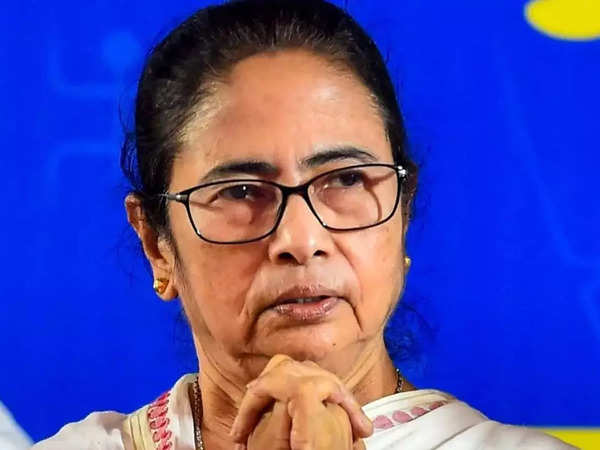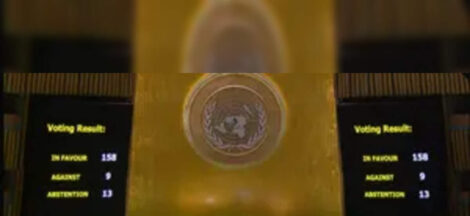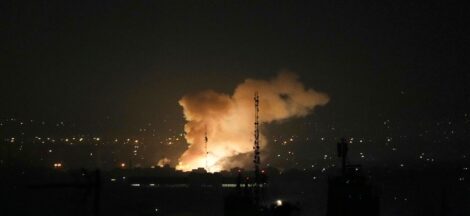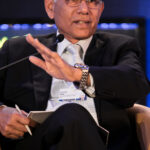Democratic rights activist Jagdeep S. Chhokar in his recent piece in the news portal The Wire mentions of his four conclusions on the state of Indian polity in the present stage after the BJP sweep in Delhi assembly polls. His four concluding points are- first, the BJP is almost achieving an opposition-free political landscape in India, second, This seems to have been achieved by decimating the opposition parties and institutional capture, third, the opposition parties have failed the nation and its people and fourth, the people of India have failed the nation.
Though, Mr. Chhokar’s conclusions are based on an analysis of the rule of the BJP led government at the centre since 2014 after Narendra Modi became the Prime Minister, he was not right on his last concluding point that the people of India have failed the nation by electing the BJP as the ruling party. His point was based on the observations of B R Ambedkar and Rajendra Prasad who underlined the importance of the people who elect the persons who work for the Constitution. Since the electors in India have elected the party which is undermining the Constitution to rule, they have failed the nation.
Mr. Chhokar has been showing too much pessimism in assessing the Indian polity in 2025. The people of India have not failed the nation. They are still alert and agile, but the failure is mostly due to the inability of the opposition India bloc to reach the people with the right agenda and organisational capability. The Indian people have proven their vigilant attitude in 2024 Lok Sabha elections by denying the BJP the majority in the new Lok Sabha and reducing its Lok Sabha tally from the earlier 303 to 240 despite the BJP and Sangh Parivar’s all-out campaign and full use of autonomous institutions of the centre in favour of the BJP candidates. This was a display of vibrant democracy and alert electorate of the nation.
The victory of the BJP in the Delhi assembly elections defeating the ruling Aam Aadmi Party (AAP) convincingly is certainly a jolt to the opposition INDIA bloc, but it does not mean the end of AAP, or the final tolls for the INDIA bloc, as some commentators in the national media and the TV channels are projecting. Those who have studied the mood of the Delhi electorate knew that in the 2025 elections, things would be much tougher for the AAP to retain power by defeating the BJP, as there was anti-incumbency after full two terms of Delhi’s ruling party. The final clincher was the big income tax relief in the 2025-26 Union budget announced on February 1, four days before the polls, and the earlier announcement on the setting up of the eighth pay commission for the central government employees.
The verdict favouring BJP was precipitated by the salaried middle classes of Delhi, who constitute majority of the 1.56 crore Delhi electorate. There were direct cash benefits to them. That certainly had an immediate impact on the polling day a few days later. But still, the voting figures show that the fight was not one-way; rather, it was a bitter battle. BJP got 45.56 per cent of the votes, while AAP secured 43.57 per cent, meaning a difference of only 2 per cent, though in seat terms, BJP got 48 and AAP only 22.
Further, taking both the INDIA bloc parties AAP and Congress votes together, the AAP-Congress combine got nearly 50 per cent of the votes and in terms of seats, 14 more seats would have come to the INDIA bloc kitty if there were an alliance. This means that INDIA bloc could have had a narrow victory by getting 36 out of the total of 70 seats, if there had been an alliance of the AAP and the Congress. Further, the AAP retained its base of Dalits, poor and Muslims, as the analysis of the constituency-wise voting patterns showed. The verdict was the result of a major middle class shift from AAP to BJP on the polling day, while the poor stood more or less by the AAP and the Congress.
So, there is no reason to be panicky that the BJP juggernaut has emerged as invincible. The real reason is that the BJP leadership, especially the Prime Minister Narendra Modi could take corrective actions in the wake of their poor results in the 2024 Lok Sabha polls and the NDA got dividends in the following state assembly polls in Haryana, Maharashtra and Delhi. Only in Jharkhand, the INDIA bloc led by the JMM leader Hemant Soren was able to defeat the NDA led by the BJP.
INDIA bloc was expected to take the proper lessons from both the Lok Sabha elections and the following state assembly poll results but they did not do that, instead, the INDIA constituents were engaged in public spat in the states where they fared badly despite impressive performances in the Lok Sabha polls. In Maharashtra, still the differences among the INDIA partners are continuing. There has been no serious effort to iron out the schism and unify the INDIA bloc under a strong leadership to meet the challenge from NDA.
On the contrary, just see the contrast in the reaction of the NDA leadership as soon as the Delhi elections results were. Out. The day the BJP chief minister Rekha Gupta was sworn, the NDA leaders had a full meeting and action plan was discussed for ensuring more coordination among the partners. It was apparent from the tone of the discussions that the next focus is Bihar which is going for the state assembly polls by the end of the year. After Delhi, Bihar is the only state poll left in the year 2025.
Prime Minister Narendra Modi visited Bhagalpur early this week and started the election campaign in full force in the presence of Bihar chief minister Nitish Kumar. The preparations are in full swing at the level of BJP in the headquarter in Delhi. The BJP war room is now tuned fully on the requirements for the assembly elections in Bihar. RSS organisations have been asked to mobilise their cadres in full strength at booth levels. The base work has begun and this will be intensified in the coming months before the state elections. Both BJP and the RSS are preparing fully so that they can meet the challenge of early elections. .
As against the preparations of NDA, especially BJP for the Bihar assembly polls by 2025 end, what is the scenario on the INDIA bloc front? It is nearly nine months since the Lok Sabha election results were announced on June 4 last year, but no meeting of the INDIA Bloc has been held. Nobody knows now whether it is functioning at all like a Bloc. Congress as the leader of the INDIA bloc, was supposed to convene a meeting soon after the Delhi assembly results were announced on February 8, but the party till now is mum on the issue. Other leaders like Mamata Banerjee, Akhilesh Yadav have called for immediate rejuvenation of the INDIA Bloc under a new leader, but the Congress is mum on that, though the party gives the impression that it has the right to remain as the leader of opposition in view of its stature as the biggest opposition party in Lok Sabha with 99 seats.
But then either the Congress leads as a proactive constituent or it reconstitutes the leadership of the INDIA bloc with the participation of other senior leaders at the top. Too much time has been wasted in the last few months by the INDIA Bloc. Bihar has to get all the focus of the INDIA Bloc and for ensuring that, immediate close coordination at the highest level of the Congress, RJD and the Left is imperative. If NDA wins Bihar assembly polls, the BJP will be getting a big momentum for the 2026 state assembly elections in Assam and Bengal. For BJP, winning ‘Anga Banga Kalinga’ is the sacred mission. Odisha is already with it and Bihar also is in BJP fold now in cooperation with JD(U).The Party wants to improve substantially its position in Assam and Bengal with full assistance from the RSS.
INDIA Bloc has to awake immediately from its long slumber and jump into action. In 2026, assembly elections will be held in Tamil Nadu, Kerala, Puducherry, Bengal and Assam. INDIA Bloc has to function effectively in Assam only to meet the challenge of the BJP led by the chief minister Himanta Biswa Sarma who is a cunning politician with organizing capability. In Bengal, there is no INDIA Bloc functioning as the TMC supremo Mamata Banerjee can take on the BJP on her own. Other INDIA parties like the Congress and the CPI(M), CPI are marginal players. In Kerala, the CPI(M) led LDF will fight with the Congress led UDF in the assembly polls, with the BJP still a marginal player in state politics. Whoever wins, belongs to the INDIA Bloc. In Tamil Nadu, the DMK led Front is the INDIA Bloc group fighting the AIADMK, BJP and others and well placed to win. DMK supremo M K Stalin is leading the Bloc constituents with confidence. He has set an example how an opposition front can be democratically operated.
It is high time the INDIA bloc parties convene a meeting and decide on the new line of leadership. Rahul Gandhi remains the LoP and the Congress always remains the biggest constituent of the INDIA bloc. The issue of a Prime Ministerial face is at all not relevant four years before the next Lok Sabha polls in 2029. The issue can be discussed before or after the Lok Sabha polls taking into account the ground situation. In the interim period, there are many state assembly elections which will have to be fought. INDIA bloc must have a coherent strategy for that. The battle against the BJP has to be fought on all fronts, both in Parliament and outside. Rahul can lead the INDIA bloc inside the Parliament, while Mamata-Stalin duo should be entrusted with the task of infusing dynamism in the operations of INDIA bloc in 2025 and beyond. (IPA Service)




 Adhikari Accuses Banerjee of Defaming Election Commission
Adhikari Accuses Banerjee of Defaming Election Commission 